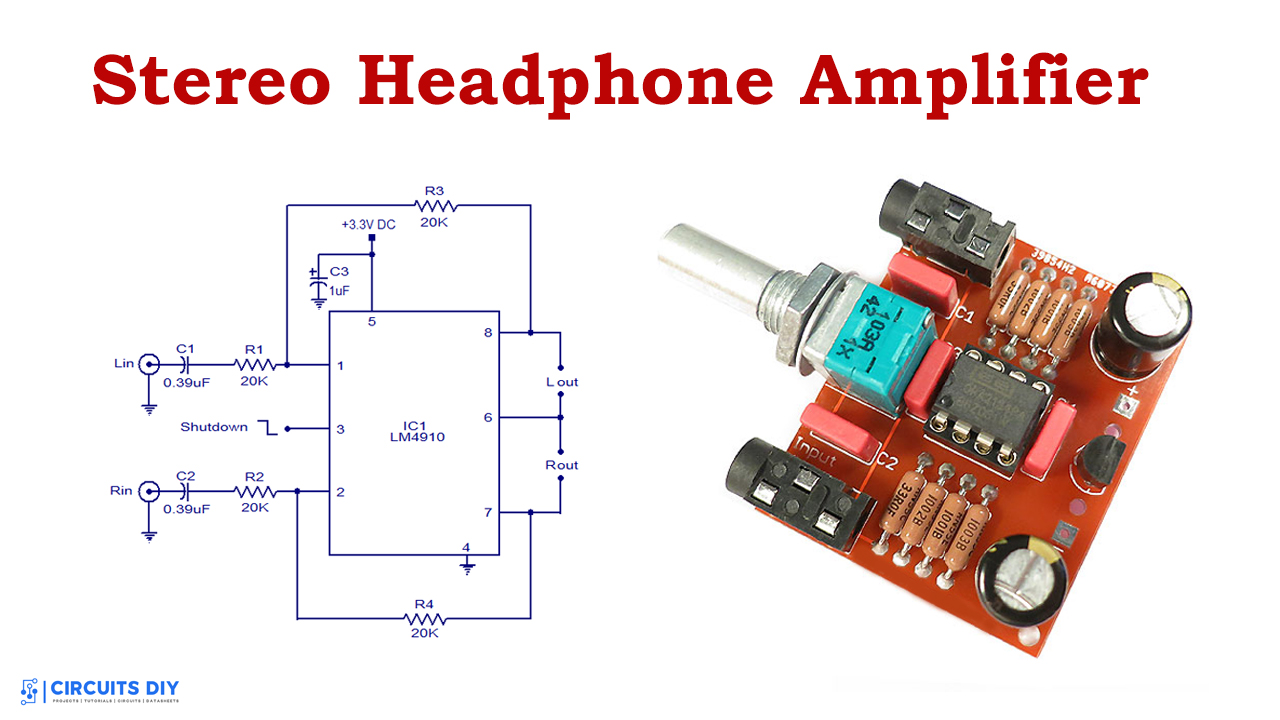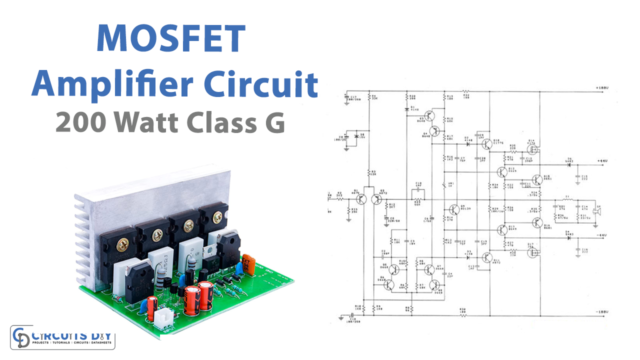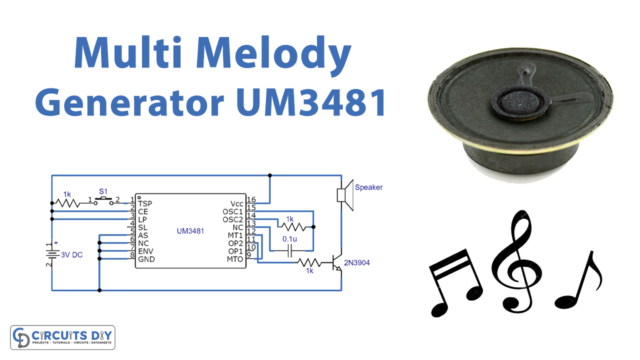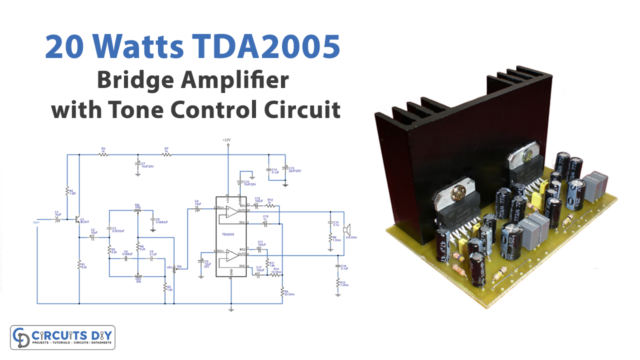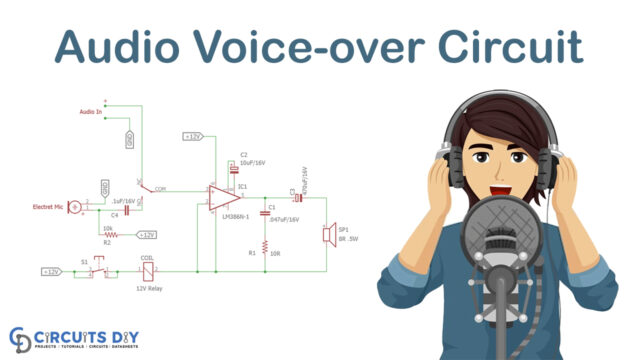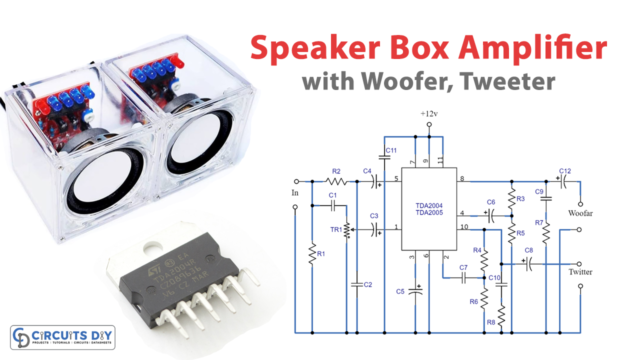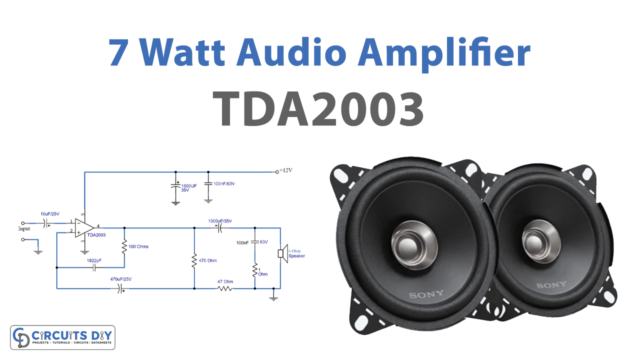Introduction
Headphones are used by every other person. Some of us use this compact device every day. But, not every one of us thought about its internal circuitry. So, in this article, we are making a headphone circuit. A stereo headphone amplifier circuit is generally used to drive a headphone having a relatively low impedance. To clarify, it is the low-powered amplifier circuit that boosts the low voltage audio signal of your device, that is PC, smartphone, etc. And, convert that signal into an adequate level of sound waves in your headphones. As a result, while wearing the headphones you hear a sufficient level of sound that cannot be heard by another person around you.
This circuit uses LM4910. Since this IC is only accessible in the SMD packages. Therefore, use it carefully while soldering. Use the IC holder to mount this IC. The circuit uses a limited voltage between 2.2V to 5V. Hence, the use of higher voltages on the input can destroy the circuit. Also, the low voltage at the shutdown pin of the IC LM4910 turns OFF the IC. While the high voltage at the same pin turns ON the IC.
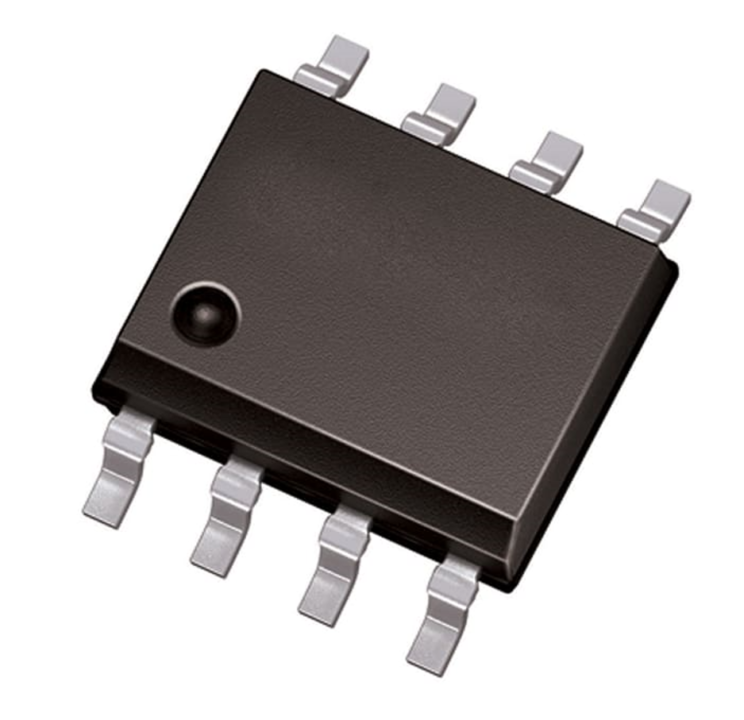
Hardware Components
The following components are required to make Stereo Headphone Amplifier Circuit
| S.no | Component | Value | Qty |
|---|---|---|---|
| 1. | Breadboard/ Veroboard/ PCB | – | 1 |
| 2. | IC | LM4910 | 1 |
| 3. | Ceramic Capacitor | 0.39uf | 2 |
| 4. | Resistors | 20K | 3 |
| 5. | Electrolytic Capacitor | 1uf | 1 |
LM4910 Pinout
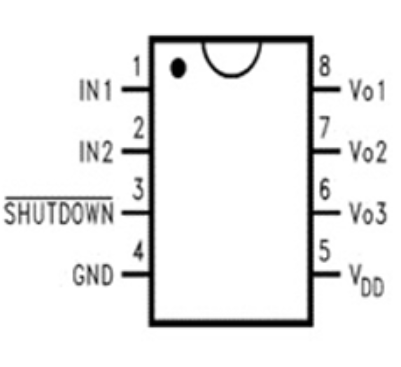
For a detailed description of pinout, dimension features, and specifications download the datasheet of LM4910
Stereo Headphone Amplifier Circuit
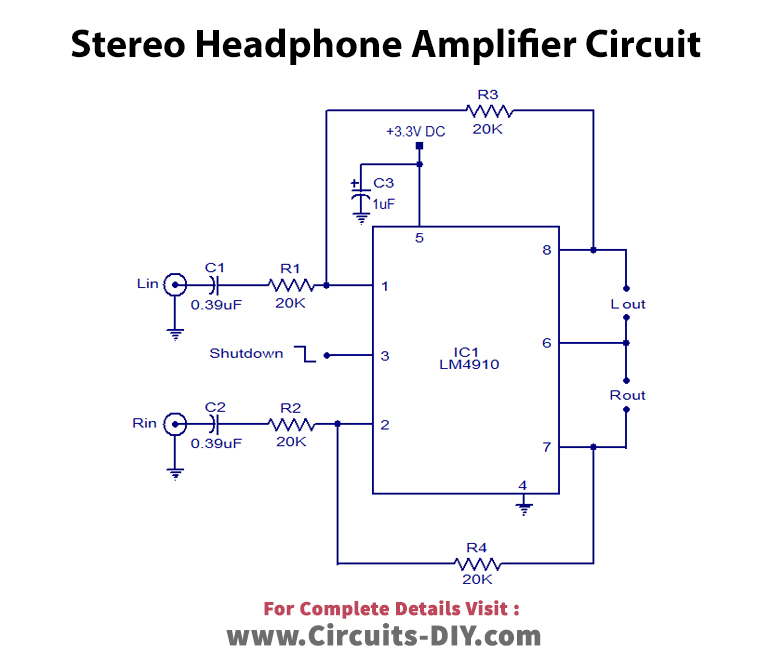
Working Explanation
LM4910 belongs to the boomer series of semiconductors. Since this IC has low distortion which is less than one percent. Therefore, it is primarily used for stereo headphone applications. At the input side capacitors, C1 and C2 are used as decoupling capacitors for both input channels. And, at the output, there is no need for coupling capacitors, because of the design of the IC. Capacitor C3 is wired as a filter.
Application and Uses
The circuit is majorly for stereo headphone amplifiers, However, it can be utilized in the AirPods circuits, etc.


